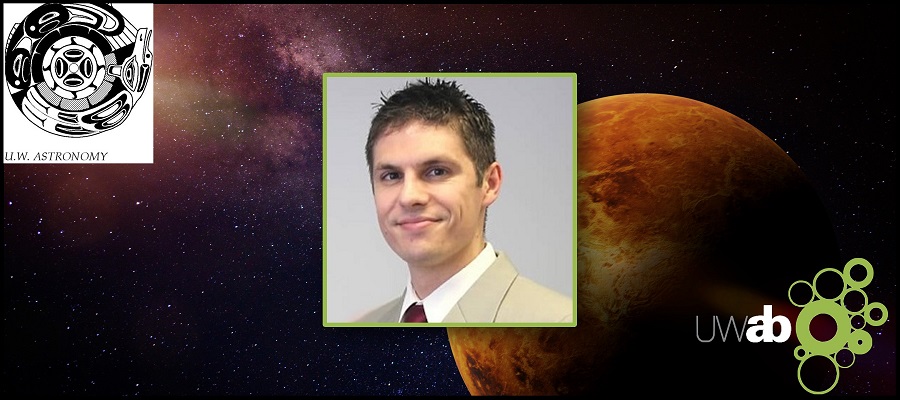Recent graduate of the UW Astrobiology Program, Andrew Lincowski (PhD Astronomy & Astrobiology, 2020), and Program Director, Victoria Meadows, published two new studies challenging the announced discovery of phosphine in the clouds of Venus. Their work has been highlighted in a recent news article in Nature.com and in the UW news, among others.
The first paper, led by Andrew Lincowski and with other UWAB co-authors including Victoria Meadows, postdoc Michael Wong, and alumni Eddie Schwieterman (PhD Astronomy & Astrobiology 2016) and Giada Arney (PhD Astronomy & Astrobiology 2016), generated detailed models of Venus’ atmosphere and concluded that the signal originally announced as phosphine is more likely to be sulphur dioxide. Their analysis also suggested that if the discovery feature was due to sulfur dioxide, then it should be much weaker in ALMA telescope follow-up data than originally seen.
In the second paper, led by Alex Akins(Jet Propulsion Laboratory) with Andrew Lincowski and Victoria Meadows as co-authors, the team analyzed the latest version of the same ALMA data used for the original phosphine discovery. They were unable to detect a feature in the data, further strengthening the sulfur dioxide hypothesis.
The two papers are published in The Astrophysics Journal Letters and can be found here:

